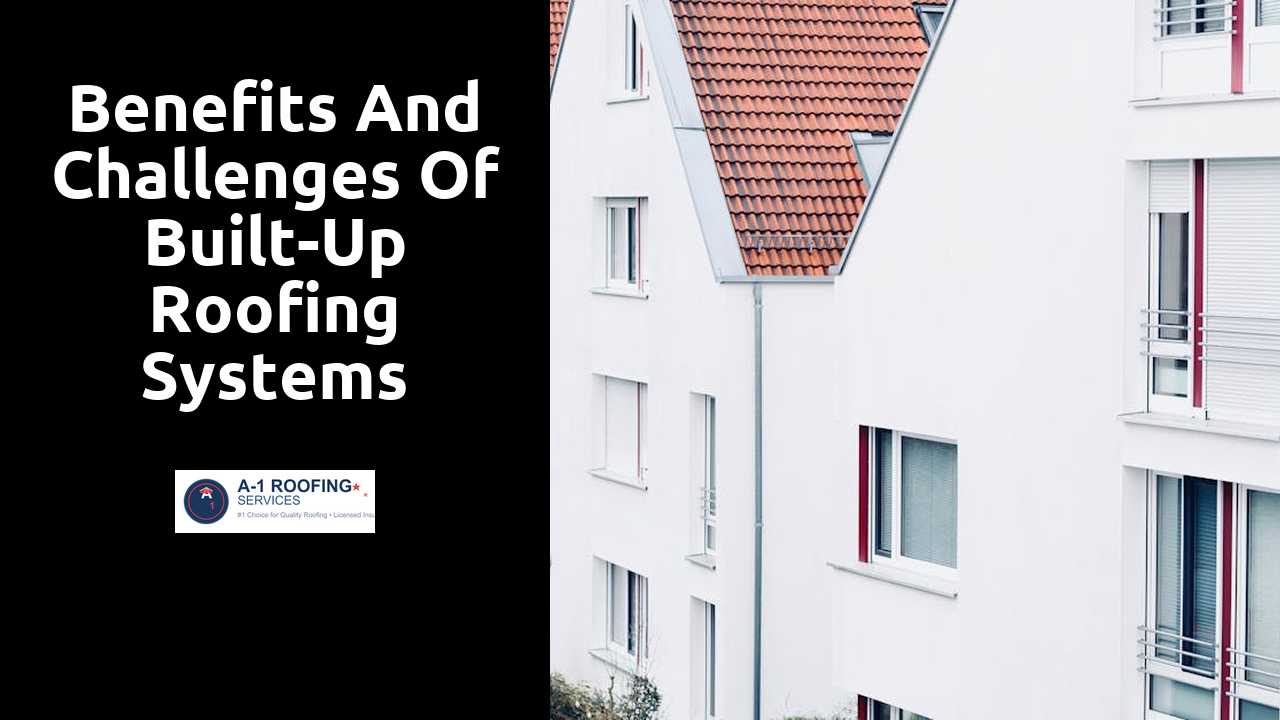
Benefits and Challenges of Built-Up Roofing Systems
Table Of Contents
Common Challenges Faced
Built-up roofing systems are popular for their durability, but they also present several challenges during installation. One key difficulty lies in the complexity of the layering process, which requires precision and expertise. Any errors during installation can lead to vulnerabilities in the roof, potentially resulting in leaks and increased maintenance costs. Additionally, the weight of the multiple layers can present structural challenges for older buildings that may not have been designed to support such loads.
Beyond installation issues, built-up roofing systems can also pose long-term challenges related to maintenance and repair. Over time, the roofing layers may degrade due to exposure to the elements, requiring periodic inspections and interventions. Identifying and addressing problems within the layered structure can be labor-intensive, as localized damage may necessitate extensive removal of roofing materials. This can complicate repair efforts, leading to increased downtime and costs for property owners.
Here is a super informative post that goes into more detail.
Installation Complications
The installation of built-up roofing systems can be complicated due to the layering process required. Each layer involves specific materials, which must be applied correctly to ensure proper adhesion and waterproofing. Misalignment during this process can lead to vulnerabilities, increasing the risk of leaks and reducing the lifespan of the roof. Additionally, the requirement for skilled labor adds complexity, as improper installation by inexperienced workers can result in further complications.
Weather conditions during installation can significantly affect the quality of the application. High temperatures can cause tar or asphalt to become overly viscous, while cold conditions may hinder proper adhesion. These environmental factors can create challenges that compromise the integrity of the roof. Moreover, the need for specialized equipment and safety measures can contribute to increased labor time and costs, making the installation process both labor-intensive and potentially costly.
Weather Resistance of Built-Up Roofing
Built-up roofing systems are designed to provide robust protection against various weather conditions. Their multilayer composition, typically consisting of alternating layers of bitumen and reinforcement, creates a formidable barrier. This layering not only enhances moisture resistance but also contributes to overall durability. Homeowners can rely on built-up systems to withstand rain, snow, and even the UV rays from intense sunlight, diminishing the likelihood of leaks or water damage.
Performance in extreme temperatures is another notable feature of built-up roofing systems. The materials used can expand and contract without compromising the integrity of the roof. This flexibility is essential in regions with fluctuating climates, where heat and cold cycles can strain roofing materials. Additionally, built-up roofs can be coated with reflective materials, further improving energy efficiency while protecting the underlying structure from thermal degradation due to harsh environmental conditions.
Performance in Extreme Conditions
Built-up roofing systems are designed to endure a variety of harsh weather conditions, making them suitable for extreme climates. Their multilayered construction provides enhanced resistance to high winds, heavy rainfall, and snow accumulation. The interwoven layers of bitumen and reinforcing fabrics create a durable barrier that helps prevent the infiltration of water during torrential downpours. This water-tight seal is particularly important in regions prone to flooding, where unexpected weather events can pose risks to building integrity.
Moreover, built-up roofing exhibits resilience against temperature fluctuations, which can be common in certain areas. The layers function to insulate against both heat and cold, contributing to energy efficiency and overall comfort within the building. In colder climates, the roofs can effectively shed accumulated snow, reducing the risk of ice dam formations that can lead to leaks. The proven performance in these extreme conditions makes built-up roofing a reliable choice for many commercial properties.
Environmental Impact
Built-up roofing systems can present a significant environmental impact throughout their lifecycle. The materials used often include asphalt, which is derived from petroleum. This reliance on fossil fuels raises concerns regarding the carbon footprint associated with extraction and production. Additionally, the application of bitumen and other components can release volatile organic compounds (VOCs) into the atmosphere, contributing to air quality issues during installation and curing.
On the other hand, some built-up roofing systems incorporate recycled materials. This approach can reduce waste and lower the overall environmental burden. The longevity and durability of these roofs also mean that they need to be replaced less frequently, which can diminish the resource consumption associated with roofing projects over time. While there are challenges regarding environmental impact, advancements in sustainable materials continue to emerge, offering potential improvements for the industry as a whole.
Sustainability Considerations
The sustainability of built-up roofing systems is increasingly being scrutinized as environmental consciousness grows. The materials used in these roofing systems can have varying levels of eco-friendliness, depending largely on the source and production methods. Options like recycled or bio-based materials are becoming more available, allowing for reduced impacts on natural resources. Utilizing these sustainable materials not only helps in minimizing the carbon footprint but also enhances the overall lifecycle performance of the roof.
Beyond material selection, the energy efficiency of built-up roofing systems plays a critical role in their sustainability profile. These roofs can contribute positively to the energy performance of a building by providing insulation and reflecting solar heat. This can reduce the demand for heating and cooling, leading to lower energy consumption over time. Proper installation and maintenance practices are also essential to ensure that these roofs achieve their intended energy-saving benefits.
Related Links
Choosing Spray Foam Roofing for Energy Efficiency in Commercial SpacesInnovative Green Roof Solutions for Commercial Buildings